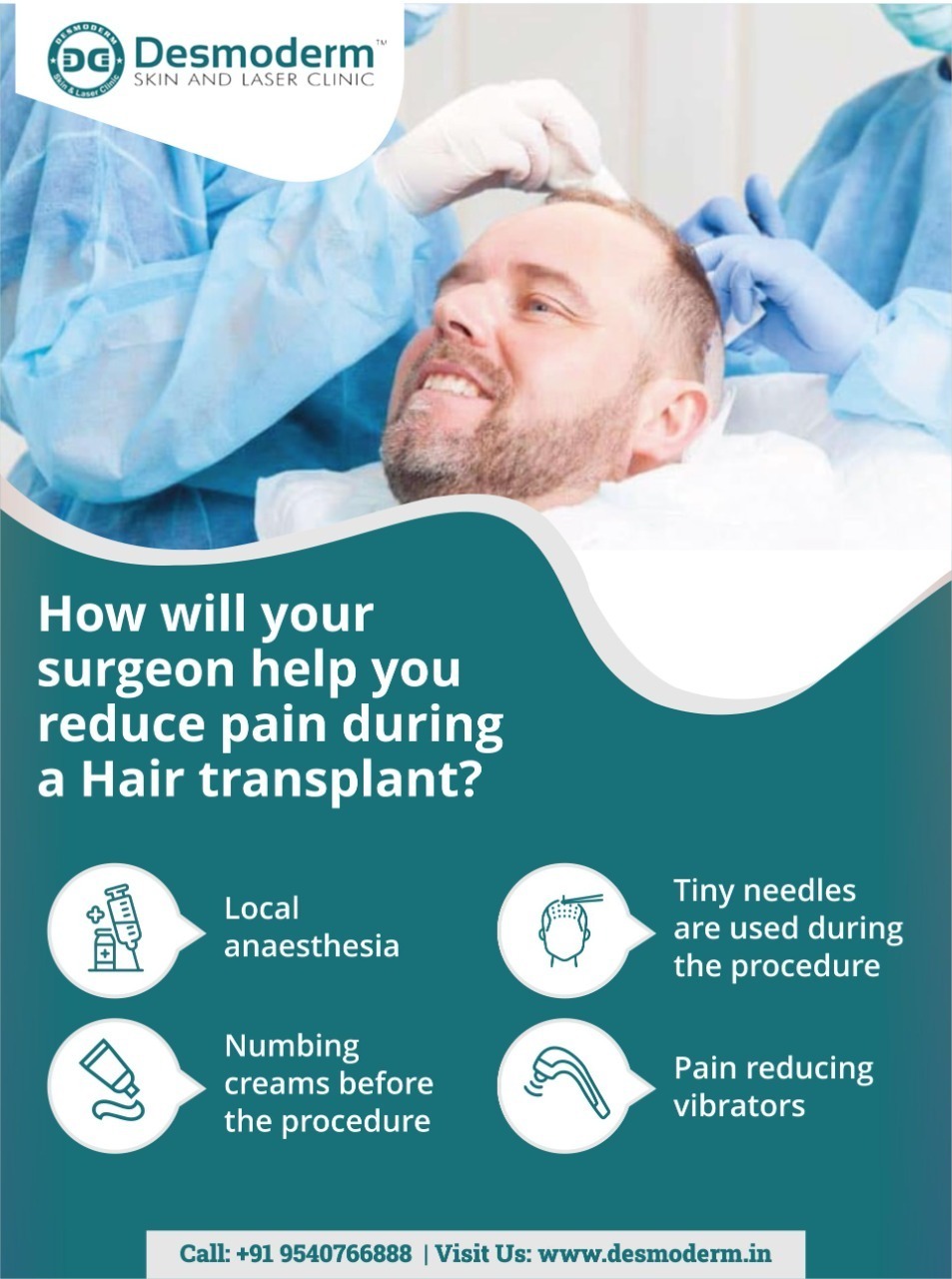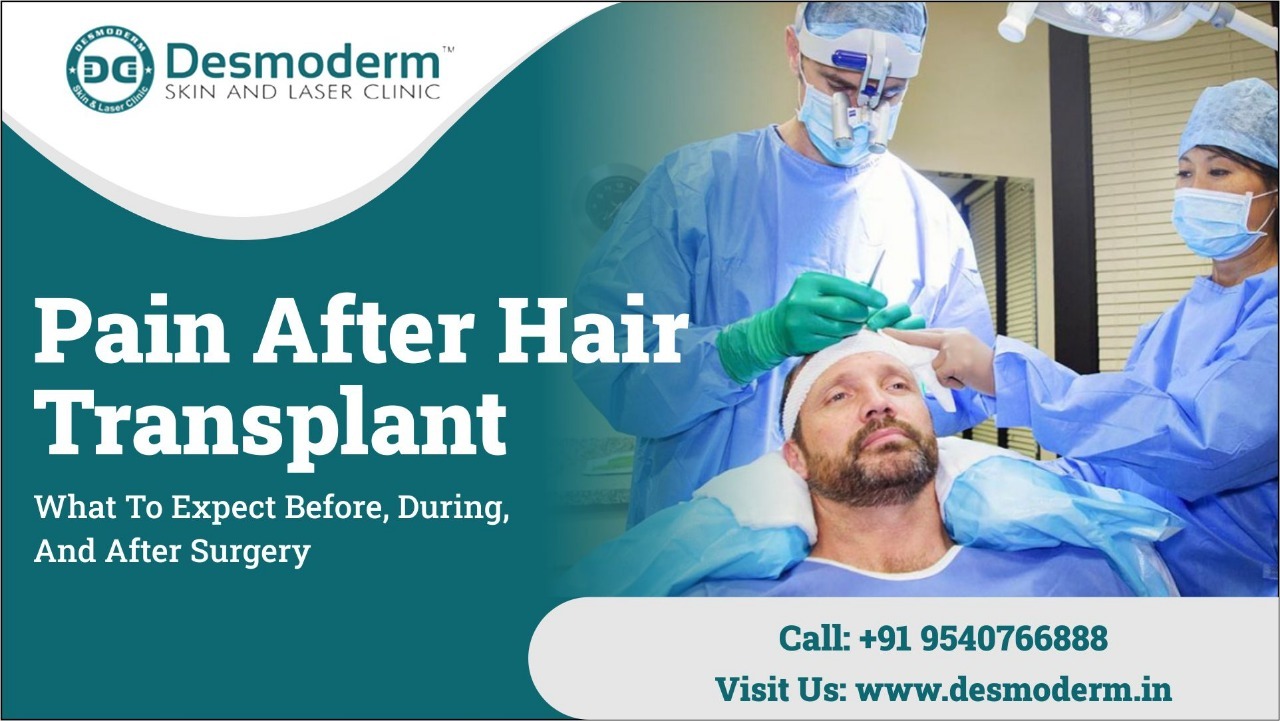When medications and therapies cannot treat baldness and abnormal thinning of hair, dermatologists often resort to hair transplant as the final solution. While it is considered a near permanent remedy and can solve their issues, many people hesitate to undergo this procedure. This is primarily due to the fear of the unknown. People are unaware of what to expect before, during, and after the surgery. And, the million-dollar question that pops in our head every time we hear about surgery, “would it be painful?”
We understand all these concerns and realize that you need to be aware of the answers to be able to consider if the procedure is worth it. This article will address your concerns regarding pain after a hair transplant.
Table Of Contents:-
- Is Hair Transplant Painful?
- Is The Recovery Process Painful?
- Giving Pain Relieving Medications
- Takeaway
- FAQs
Is Hair Transplant Painful?
Since hair transplant is a surgical procedure, it will accompany a slight discomfort during and for a few days after the procedure. However, if performed by a skilled professional, using the right technology, and given proper medications, the discomfort will be minimal and no pain at all. Generally, the answer to this question varies for every person and depends on several factors.
The biggest determining factor is the method of transplant. There are two ways to perform a hair transplant surgery:
Follicular Unit Transplant (FUT)
In this method, a strip of hair from the donor site is taken along with the skin of the scalp and healthy hair follicles. These hairs are then separated into tiny strips of the desired size. After preparing the recipient site with antiseptics, these hair strips are implanted into the scalp.
Follicular Unit Extraction (FUE)
In this method, the healthy hair follicles from the donor site are extracted directly from the scalp. Then, after preparing the recipient site, these follicles are placed in the open follicular pores at the recipient site.
During the diagnosis, your dermatologist would rule out all the factors that could cause complications and make sure that you are an eligible candidate for the procedure.
Before the surgery, the plastic surgeon or dermatosurgeon would inject the site with local anesthesia. Due to this, you will be awake during the whole procedure, but the surgical site would be numb. Although you will feel a brief sting while getting injected, there will be no hair transplant pain throughout the surgery. A few people sometimes feel a slight pulling, but that is all.
Since the FUT method is more invasive, it slightly irritates the peripheral nerves in the region during strip extraction. This increases the chances of discomfort and, in some cases, pain. On the other hand, FUE is a minimally invasive and relatively new procedure. Although it is a lengthier and more meticulous process, it barely causes any trauma to the surgical site.
Other factors that can determine whether or not you feel pain during the surgery include the quality of hair, the area and sensitivity of the surgical site, and the extent of your body’s response to the anesthetic.
Overall, if the surgery is performed methodically by a skilled individual, the chances of hair transplant pain are almost non-existent.
Is The Recovery Process Painful?
After the hair transplant procedure, the recovery period varies depending on the method of surgery.
For FUT, the discomfort and pain after a hair transplant last for about 4 to 5 days, and the scalp takes up to 2 weeks to heal completely.
After undergoing the FUE method, you would feel pain and discomfort for 1 to 2 days. The surgical site takes about a week to heal completely.
During this period, the doctor would recommend some painkillers. Taking those medicines for the advised period would prevent you from experiencing pain after hair transplant.
As the process involves a minor operation, it comes with some discomfort. But if you take the medications and other precautions as prescribed by your dermatologist, you will feel no pain even during the recovery period.

Giving Pain Relieving Medications
Your dermatologist would prescribe you some medications for a few weeks following the surgery. The main idea of this is to prevent any infection on the surgical site and to reduce or eliminate any pain after the hair transplant surgery.
The medicines mainly consist of antibiotics and painkillers. However, it is worth noting that post-surgical medications are personalized for every patient. Your dermatologist knows about your whole process and what problems you could face. Based on that, they would prescribe the medicines, their dosage, and their period.
Takeaway
At Desmoderm Clinic, providing the best quality healthcare services is our topmost priority. Our director, Dr. Ranjan Upadhyay, is an experienced dermatologist with expertise in several surgical and non-surgical dermatological procedures. He is a regular and active participant in both national and international seminars and stays abreast of the latest advancements in the field.
Equipped with the latest technology machines and tools, Desmoderm Clinic provides excellent treatments, including hair transplant, hair regrowth treatment, fillers, wrinkle reduction, and several others. When looking for the best hair transplant services in Delhi, book an appointment at Desmoderm Clinic!
FAQs
Read More:-
- PRP For Hair Loss
- Thing Considering While Choosing Hair Transplant Surgeon
- Hair Transplant Myths And Facts
- Pre And Post Hair Transplant Care
- Hair Transplant Procedure Recovery Cost
- Fue Hair Transplant Procedure Benefits Recovery Cost
- PRP Hair Treatment Success rate does it Work For Hair Loss
- Before And After Hair Transplant Step by Step Situations
- Before And After Hair Transplant Step by Step Situation
- Hair Transplant
- Why People Choosing HIFU Treatment Over Botox Filler


